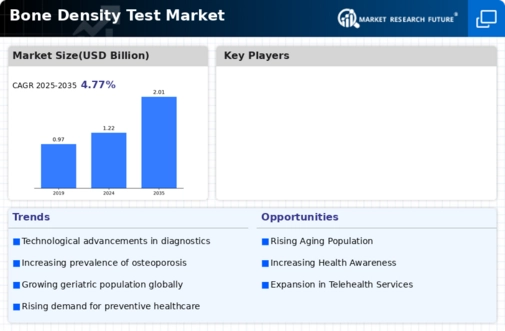Market Analysis
In-depth Analysis of Bone Density Test Market Industry Landscape
Markets change as people live longer. As the globe ages, osteoporosis and other bone diseases increase. To detect and prevent bone issues, have bone density examinations. The growth in osteoporosis has affected markets. Bone density examinations can predict who may break bones and how to prevent fractures. Tests like DEXA and QUS that are new to the market change how things work. This new technology makes bone density tests more reliable and doesn't hurt the patient. This is what drives the Bone Density Test Market. Bone diseases can be controlled and found early, which changes how markets work. People who get regular bone density tests can change how they live, start taking drugs, and avoid breaking bones. Bone density tests are used in some medical treatments, which is changing the market. Regular medical visits and bone density testing are increasing for elderly persons and menopausal women. Being able to figure out the risk of breaking a bone through bone density tests is becoming more popular. These tests help doctors figure out how to keep each person from breaking bones by telling them how likely they are to do so. The market has changed because of new bone density measuring tools, especially small ones that can be held in one hand. Portable tools make it easy to get bone density tests and help with health care that keeps you healthy. The market is changing because more bone density tests are being done at the point of care. A patient's bone density can be checked at the point of care, and the doctor can quickly talk to the patient about their bone health. Getting people to know about osteoporosis and take care of it changes how markets work. People are more likely to get bone density tests when their government or a health care group spreads information about bone health. There is a lot of tough competition in the Bone Density Test Market. Companies are unique because their platforms are easy to use and offer a wide range of accurate and reliable testing methods for bone health. New and better ways to check bone density come about because of competition. It is expected that bone health supporters and tech companies will work together more to make tests more accessible and come up with new biomarkers and artificial intelligence (AI) tools for figuring out the chance of breaking a bone.



Leave a Comment